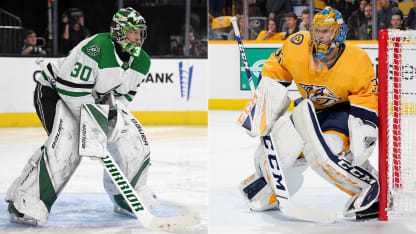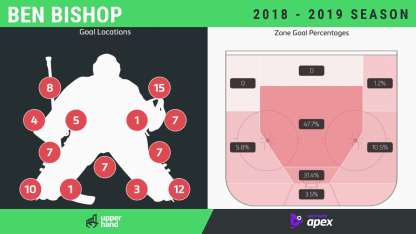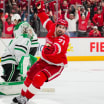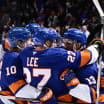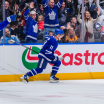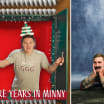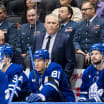Shoot wide?:Rinne's taller, narrower stance seems to improve his traffic management with screen goals down from 33 percent two seasons ago to 18 last season to 12 this season. It also allows him to shift into long shots rather than reaching for them, which has opened holes under the arms in past seasons. The goals that scored under his arms dropped for a second straight season, from 13 to nine to six. If there is a negative associated with this change, it's a tendency to chase shots laterally. Among the 17 goals Rinne allowed on low-high plays, several saw the puck hit the end board on one side and came back on the other side for a shot with Rinne scrambling for position. He allowed 22 against-the-grain goals, with Rinne pushing in one direction toward shots that were then deflected in some manner to go the other direction.
Glove love:Like Bishop, there could be a temptation to look at the goal chart and think high glove is the way to score. It's important to remember we don't have a save percentage for these locations and shot volume, and quality may play a big role. Anecdotally, the prowess Rinne has with his glove has been well documented, its roots in playing a Finnish version of baseball while growing up. Seven of the 34 allowed to the high-glove area were considered clean shots. A better target may be low blocker just above the leg pad, which accounted for seven of the 34 clean goals and 17 total goals. Unlike shooting glove side, which provides Rinne the opportunity to catch the puck, even along the ice, and control rebounds, targeting the blocker side has a better chance of producing second chances. That's important because rebounds factored into 21 of the 100 goals charted this season.
Low tips: Most goalies drop their hands to their sides to seal holes in their butterfly on screen shots. Rinne, though, will sometimes keep his hands high on shots through traffic, which played a role in some of the 28 goals that went in just above his pads.
